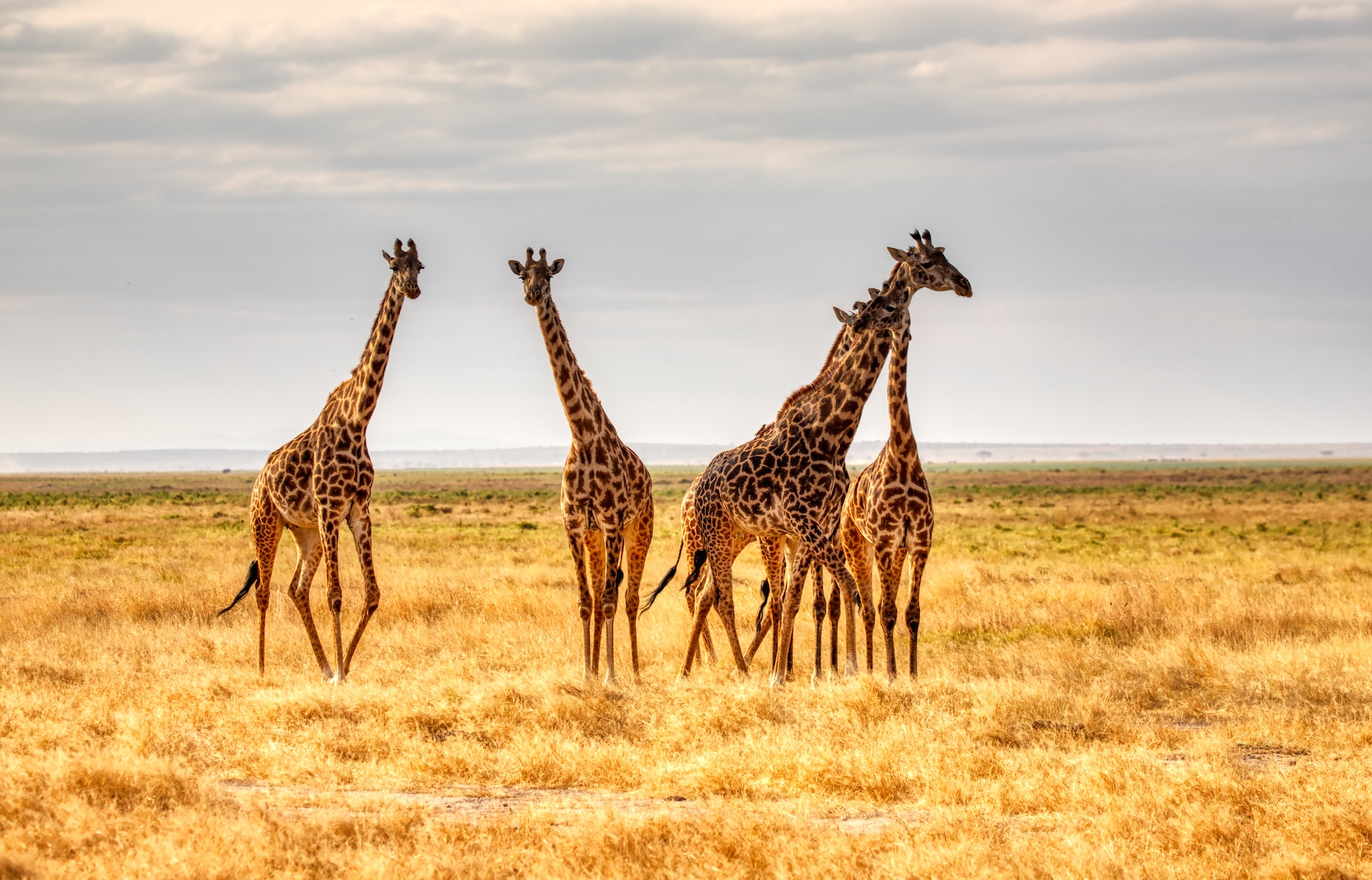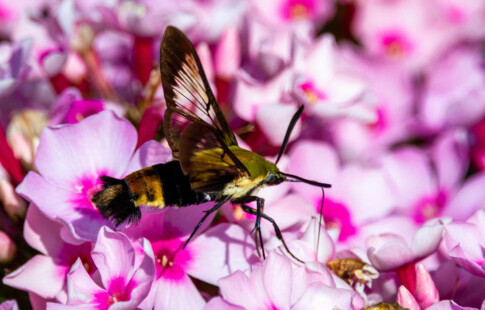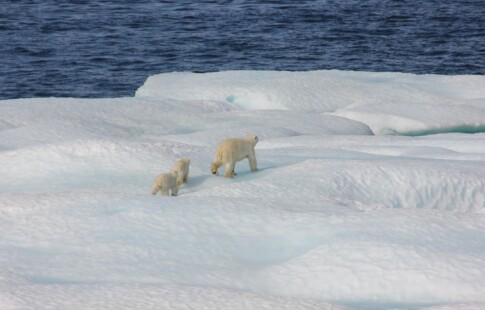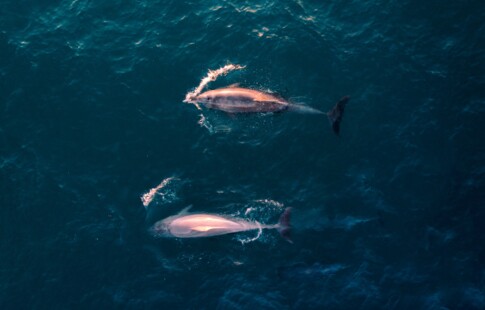
Are Giraffes Endangered?
We are reader-supported. When you buy through links on our site, we may earn affiliate commission.
Elegant and mysterious, giraffes have fascinated humanity since we first laid eyes on them. Now they need our help. The International Union for Conservation of Nature (IUCN) classifies giraffes into nine subspecies, of which four are endangered or critically endangered. The IUCN classifies giraffes — as a species — as vulnerable rather than endangered. Why are giraffes struggling, and what can you do to help?
Conservation Status of Each Subspecies
Here’s a quick breakdown of each giraffe subspecies’ conservation status under IUCN:
- Kordofan: Critically endangered
- Nubian: Critically endangered
- Reticulated: Endangered
- Angolan: Least concern
- West African: Vulnerable
- South African: Technically not yet evaluated by the IUCN, this species may still be vulnerable in the wild.
- Masai: Endangered
- Thornicroft’s: Vulnerable
- Rothschild’s: Near threatened
Why Are Some Giraffes Endangered?
Giraffe populations have fallen by 40% over the past 30 years, down to just 100,000 individuals. Several factors are contributing to the species’ decline, including:
- Habitat Loss
Habitat loss may be the single biggest threat to giraffe survival. One of the biggest changes has been the conversion of woodlands into ranches and farms. Giraffes rely on trees as a food source, so clearing trees to plant crops takes away a vital part of their habitat. Additionally, farmland is often fenced in, and giraffes cannot jump over fences like some smaller animals can. Fences fragment their habitat into isolated patches.
Another driver of habitat fragmentation is roads and other infrastructure. Animals tend to shy away from human development, making their habitat smaller and more broken up over time. Highways can make it difficult for giraffes to reach food, water, and shelter. Animals that do attempt to cross are sometimes hit by cars. High-voltage power lines also pose a threat of electrocution to giraffes.
Africa’s burgeoning charcoal industry also harms giraffes. Many Africans chop down trees and burn them to make charcoal fuel. Although this industry is a valuable source of income for many impoverished people, it further reduces giraffes’ available food.
- Poaching
A quick online search for giraffe hides, bone knives, and taxidermied body parts turns up countless results. Because giraffes as a species aren’t classified as endangered, the giraffe parts trade is legal in many countries — including the United States — and it plays a major role in the animals’ decline.
Many vendors claim their products came from animals that died of natural causes or as part of a controlled cull. Even if this were true, it still reinforces the market for giraffe parts, incentivizing people to poach the animals and claim that they died of natural causes. There’s no way for consumers to tell where the parts actually came from.
Additionally, many people still use wildlife parts for traditional medicine and as good luck charms or omens. The growing human population and decreasing giraffe population makes these practices unsustainable in the modern world.
- Civil Unrest
Ongoing conflict in countries like Sudan has increased poaching, wildlife trafficking, and accidental deaths from animals caught in the crossfire. It has also caused many desperate people to turn to eating bushmeat — such as giraffes and elephants — to survive.
- Disease
Habitat fragmentation has led to inbreeding in many giraffe populations. When related animals interbreed, their offspring often have genetic diseases.
Another potential cause of giraffe decline is giraffe skin disease (GSD), which is widespread in many parts of Africa. In one study, 86% of captured giraffes in Murchison Falls National Park, Uganda had GSD.
- Climate Change
Surprisingly, higher temperatures don’t seem to be affecting giraffe populations — it’s the greater rainfall in some parts of Africa that are harming them. Both adults and calves are more likely to die during periods of heavier-than-normal rainfall.
Researchers speculate that there are several reasons for this effect. First, they think giraffes may acquire more gastrointestinal parasites during the rainy season. Scientists already know heavy flooding can cause severe disease outbreaks among giraffes, including anthrax and Rift Valley fever virus.
But another reason for reduced survival could be that when it rains harder, plants tend to grow faster. Fast growth reduces the nutritional quality of the leaves giraffes need to survive.
What Will Help Giraffes?
Across Africa, there are now four times as many elephants as there are giraffes. But it is possible to help their numbers recover. Actions that will help their species include:
- Endangered Status
The U.S. Fish and Wildlife Service implements the Endangered Species Act in the United States. Because the government classifies giraffes as vulnerable rather than endangered, they do not have as many legal protections as they could. For example, getting endangered status would make trading giraffe parts illegal in the United States.
- Habitat Protection and Restoration
With habitat loss one of the primary drivers of giraffe population declines, slowing the development of farmland, roads, and fences can help the species. Installing methane stoves and rooftop solar panels for household use can reduce Africa’s demand for charcoal.
You can help giraffes by donating to organizations that support giraffe habitat restoration.
- Ecotourism
Ecotourism refers to people paying to see wildlife or natural landscapes, and it’s a huge industry in Africa. Paying to watch giraffes in the wild — rather than supporting giraffe poaching — incentivizes tour guides to help the animals, since they become a valuable source of income. Visitors get very excited to see a diverse array of wildlife, too, so ecotourism also supports biodiversity.
Conservation centers can promote ecotourism by helping visitors learn about giraffes. Some wildlife centers even let people feed the animals, giving guests a hands-on experience that reinforces their love of wildlife. When people are better educated about animals, they tend to cultivate a new appreciation for them that often leads to greater support for conservation.
Protecting Africa’s Treasures
Giraffes are a symbol of Africa itself — beautiful, resilient, and strong. Losing them would mean losing a cultural icon people have identified with for thousands of years. Although four subspecies of giraffes are endangered, efforts are in place to protect them.
You can help by donating to conservation funds, supporting ecotourism, and petitioning to get giraffes on the endangered species list. Combined, these actions will help save one of the world’s most beloved species.
Share on
Like what you read? Join other Environment.co readers!
Get the latest updates on our planet by subscribing to the Environment.co newsletter!
About the author
Jane Marsh
Starting from an early age, Jane Marsh loved all animals and became a budding environmentalist. Now, Jane works as the Editor-in-Chief of Environment.co where she covers topics related to climate policy, renewable energy, the food industry, and more.





